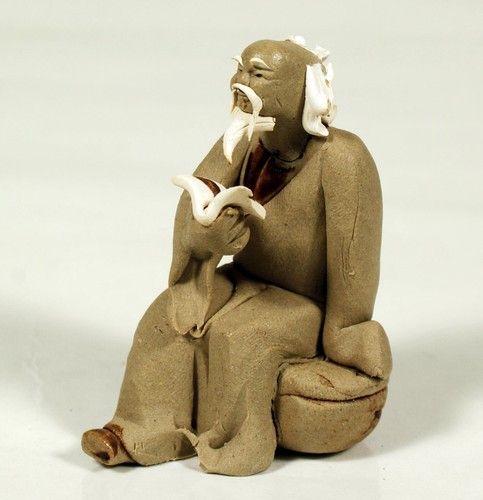Add A Little Penjing To Your Bonsai With Chinese Mud Men!
13th Aug 2015
While Bonsai tree cultivation is acknowledged as a primarily Japanese art form, other cultures in Asia have their own 'spin' on these miniature landscapes. Penjing is the Chinese variation on Bonsai, and for enthusiasts who want to add a little variety, hints of the Penjing style can create a truly distinctive setting, even among other Bonsai trees!
There are three basic ways that Penjing varies from Japanese Bonsai:
- The pottery can be brightly-colored or of unusual shape.
- Penjing trees can have thin trunks or "wilder" branch stylings.
- Penjing can incorporate human figures or other miniature elements.
Bonsai is seen as the "purer" style, focusing on Zen minimalism with as few extra elements as possible. Penjing can be showier, or focus more on the interaction or interconnection of humans and nature.
And if you want to add a little Penjing spice to your Bonsai, a Chinese Mud Man or two can be just the thing!
What Mud Men Can Add To Your Bonsai Potting
The art of creating small human figurines out of clay for Chinese landscape art goes back to at least the Tang Dynasty, 1400 years ago. They were almost always created from molds, then hand-painted, glazed, and fired in a kiln like other pottery.
The most common colors then were yellow, blue, white, and green, but mud men today can be nearly any color. Likewise, virtually any figure could be turned into Mud Men, styled to represent people from all walks of life.
They could...
1 - Demonstrate the personality of your tree.
Is your Bonsai outgoing and full of life? Add some children playing around its base to show how giving it is. Does it inspire quiet contemplation? Drop in a monk quietly meditating at its base. Is it a place for meetings? Try a figurine of two people playing chess or Go.
2 - Add animal life.
A Bonsai tree can be enhanced by adding a fawn underneath, or a turtle crawling by. These help create the impression of a tree in the forest, sharing itself equally with any creature that wanders by. Just a tiny bit of animal life can add greatly to the overall life of your Bonsai composition.
3 - Create dioramas.
Mud Men aren't limited to people, or even creatures. Many Penjing presentations integrate bridges, pagodas, arches, or other architectural elements to create a unified landscape that includes the human touch. The effect can be striking when the clay models are at the proper scale.
4 - Suiseki can extend the display.
Penjing doesn't have to be contained entirely within the pot. If you place a suiseki -a small rock that models a larger rock- off to the side, a mud man upon it becomes part of a larger nature scene. Use a bamboo mat to anchor the presentation and create its boundaries.
5 - Give it water features.
If you want to get advanced with your Penjing influence, try water-styled features! These might merely be blue pottery representing water, or could be actual water in its own canal or lagoon. Then, you can tie the water elements to the rest of the presentation by adding miniature bridges, or fishermen, or animals stopping for a drink.
(If you use real water, please be sure to keep it separate from the soil and roots. Otherwise, it's possible to drown the tree.)
Do You Have A Multicultural Bonsai?
If your Bonsai is asking for something a little different, or wants to show greater personality, add some Mud Men! They expand your creative horizons and allow a broader range of landscapes, while bringing out more of your tree's distinctive nature.


